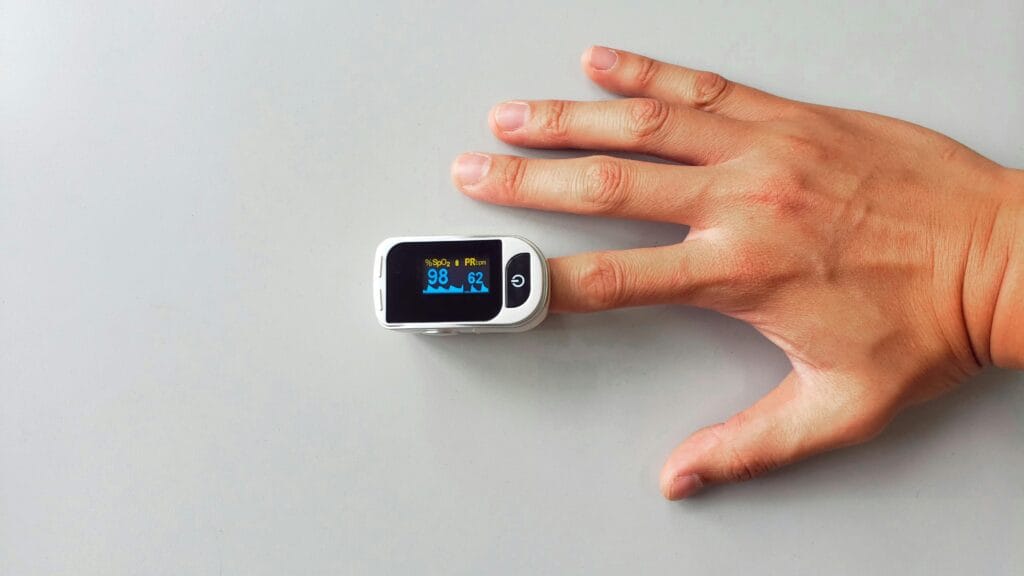INTRODUCTION
Far-away persistent monitoring (RPM) has gained significant momentum in recent years, enabling healthcare providers to monitor patients’ conditions beyond traditional clinical settings. With the advent of artificial intelligence (AI), RPM is undergoing a remarkable shift, empowering patients and clinicians with advanced tools for data analysis, predictive assessment, and personalized care.
Understanding Remote Patient Monitoring
RPM involves the use of technology to collect and transmit patient health data to healthcare providers for evaluation and intervention. This technology can include wearable devices, medical sensors, and mobile applications. RPM allows real-time monitoring of vital signs, symptoms, and medication adherence, enabling early detection of health changes and timely interventions.

The Role of Artificial Intelligence in RPM
AI plays a crucial role in enhancing the capabilities of RPM systems. By leveraging machine learning algorithms, RPM devices can:
- Analyze large datasets: AI can process and interpret massive volumes of patient data, identifying patterns and trends that may indicate health changes or deteriorating conditions.
- Provide real-time insights: AI can deliver real-time insights into patient health status, enabling timely interventions and adjustments to treatment plans.
- Predict health outcomes: AI can predict the likelihood of adverse health events, such as hospitalizations or complications, allowing proactive measures to prevent these outcomes.
- Personalize care: AI can tailor care plans by customizing recommendations and interventions to individual patients’ needs and preferences.
- Enhance patient engagement: AI-driven RPM devices can improve patient engagement by providing personalized feedback, reminders, and support.
Applications of AI in RPM
AI is being applied to a wide range of RPM applications, including:
- Chronic disease management: AI-powered RPM devices can help manage chronic diseases such as diabetes, hypertension, and heart failure by monitoring vital signs, medication adherence, and symptom reporting.
- Post-discharge monitoring: AI can be used to monitor patients after hospital discharge, detecting early signs of complications and facilitating timely intervention.
- Remote consultations: AI-driven video conferencing tools can enable virtual consultations between patients and healthcare providers, reducing the need for in-person visits.
- Mental health monitoring: AI-powered devices can be used to monitor mental health symptoms, such as anxiety and depression, and provide support and interventions.
- Remote rehabilitation: AI-powered devices can be used to support remote rehabilitation programs, providing personalized exercise plans and monitoring patient progress.
Benefits of AI-Driven RPM
- Improved patient outcomes: AI-driven RPM can lead to better patient outcomes by enabling early detection of health changes, preventing complications, and improving adherence to treatment plans.
- Enhanced patient engagement: AI-powered RPM tools can improve patient engagement by providing personalized feedback, reminders, and support.
- Reduced healthcare costs: AI-driven RPM can reduce healthcare costs by preventing hospitalizations, reducing the need for in-person visits, and improving medication adherence.
- Increased access to care: AI-powered RPM can improve access to care for patients in remote or underserved areas.
Challenges and Considerations
While AI-driven RPM offers significant benefits, there are also challenges and considerations to address:
- Data security and privacy: Protecting patient data security and privacy is a critical concern in RPM. Robust security measures must be implemented to prevent unauthorized access to sensitive information.
- Interoperability: Ensuring interoperability between different RPM devices and systems is essential for seamless data exchange and analysis.
- Regulatory compliance: RPM systems must comply with relevant regulations and standards, such as HIPAA in the US and GDPR in the European Union.
- Patient education: Patients may need to be educated about the benefits of RPM and given sufficient training to use the technology effectively.
- Algorithm limitations: AI algorithms may be limited by the quality and diversity of data available for training and analysis.

Future Outlook
The future of AI-driven RPM is bright, with the potential to revolutionize healthcare delivery. As AI technology continues to advance and the availability of affordable wearable devices and sensors increases, we can expect to see even more innovative applications of AI in RPM.
Developing the Benefits of AI-Driven RPM
- Improved decision-making: AI-driven RPM can provide healthcare providers with real-time data and insights, enabling them to make more informed and effective decisions about patient care.
- Enhanced care coordination: AI can facilitate better coordination among healthcare providers by sharing patient data and insights across different settings.
- Reduced hospital readmissions: AI-driven RPM can help reduce hospital readmissions by detecting and addressing potential health issues before they escalate.
- Increased patient satisfaction: AI-driven RPM can improve patient satisfaction by offering personalized care and support.
Addressing Challenges and Considerations
- Data privacy and security: To address concerns about data security and privacy, healthcare organizations must implement strong measures like encryption, access controls, and regular security audits.
- Interoperability: Ensuring interoperability between different RPM devices and systems requires adopting standardized data formats and protocols within healthcare organizations.
- Regulatory compliance: Healthcare organizations need to stay updated on relevant standards and regulations related to RPM, ensuring their systems comply with these requirements.
- Patient adoption: To encourage patients to adopt RPM, healthcare providers should educate them about the potential benefits of the technology and provide adequate training and support.
- Technical limitations: While AI technology is rapidly advancing, there may still be technical limitations that can affect the accuracy and reliability of RPM systems.

Future Perspective
- Integration with other healthcare technologies: AI-driven RPM systems can be integrated with other healthcare technologies, such as electronic health records (EHRs) and telemedicine, to provide a more comprehensive and coordinated approach to patient care.
- Advancements in AI algorithms: As AI algorithms continue to evolve, we can expect to see even more sophisticated RPM devices that offer deeper and more personalized insights.
- Expansion of RPM applications: AI-driven RPM can be applied to a broader range of health conditions and patient populations, including those with chronic diseases, mental health conditions, or disabilities.
Conclusion
AI-driven RPM has the potential to revolutionize healthcare delivery by improving patient outcomes, reducing costs, and enhancing access to care. As AI technology continues to advance, we can anticipate even more innovative applications that will transform how healthcare is delivered.
- Early detection of health deterioration: AI-driven RPM can detect subtle changes in patient health data that may indicate the onset of a worsening condition, allowing for early intervention and improved outcomes.
- Improved medication management: AI can help patients manage their medications more effectively by providing timely reminders, tracking adherence, and identifying potential drug interactions.
- Enhanced patient engagement: AI-driven RPM can empower patients to take a more active role in their healthcare by equipping them with the tools and information needed to manage their conditions.
- Reduced healthcare disparities: AI-driven RPM can help reduce healthcare disparities by providing access to quality care for patients in remote or underserved areas.
Addressing Challenges and Considerations
- Data protection and privacy: To address concerns about data protection and privacy, healthcare organizations should implement robust security measures, such as encryption, access controls, and regular security audits.
- Interoperability: To ensure interoperability between different RPM devices and systems, healthcare organizations should adopt standardized data formats and protocols.
- Regulatory compliance: Healthcare organizations must stay informed about relevant regulations and standards related to RPM and ensure that their systems comply with these requirements.
- Patient adoption: To encourage patient adoption of RPM, healthcare providers should educate patients about the benefits of the technology and provide adequate training and support.
- Technical limitations: While AI technology is rapidly advancing, there may still be technical limitations that can affect the accuracy and reliability of RPM systems.


Please tell me more about your excellent articles
“Thank you so much for your kind words! I’m glad you enjoyed the article. I strive to provide insightful content on AI innovations, ethics, and governance. If there’s a specific topic you’d like to learn more about, feel free to let me know. Stay tuned for more updates!”
Thank you for writing this post. I like the subject too.
The articles you write help me a lot and I like the topic